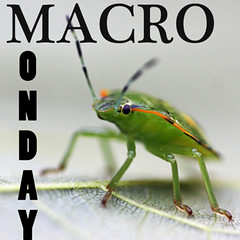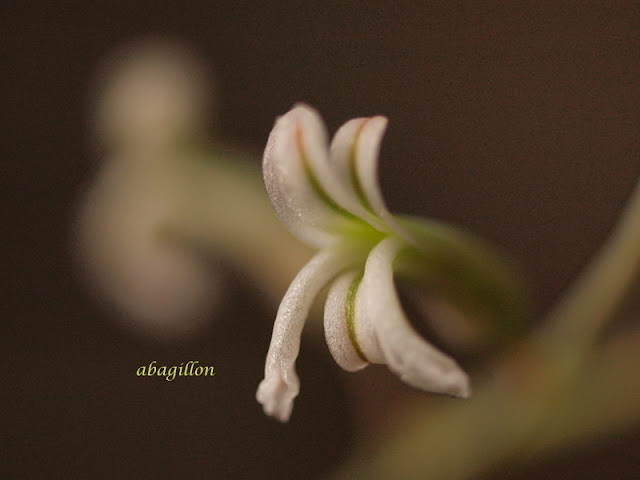 Hippeastrum puniceum
Hippeastrum puniceum, is a much loved ornamental in the bulb industry. It has been with me since i was born, freely growing in our yard. They are on-show during the rainy season, May to January, and out of sight or dormant during the dry season, February to April.
I have long been calling ours as amaryllis, thinking that is the common name and the Hippeastrum puniceum as scientific name. I just realized that amaryllis and Hippeastrum are two different genus. It has a long history of being together in a Genus and have been formally separated just lately into two separate Genus. Discussions lasted 5 decades from 1937 to 1987. Amaryllis are those from South Africa and Hippeastrum, from South America. The origin of the two genus are easier for me to understand because our colonizers were Spaniards and Portuguese. Formally they are separated, but informally they are still together. The confusion arise because most of the Hippeastrum sold as bulbs are colloquially called amaryllis, because not many people know that they are formally " botanically divorced" by the International Botanical Congress.

Above is an old photo of our hippeastrum hedge in our garden
So, now i am more confident to call ours as Hippeastrum (our local term actually is lirio). Our climate is more of the hot tropics, with around 36°C at the height of the dry season. Our bulbs are directly planted on the ground, self-supporting, neglected and only given particular attention when they bloom. This happens after the first heavy rains at the start of the rainy season in May. Staggered blooms last for a few weeks, followed by prolific green leaves that eventually dry coinciding with the start of the dry season in February. By then, we will not see its trace again unless we scrape the soil covering the bulbs.

Growth and development of hippeastrum are in two phases. Vegetative growth that follows blooming signifies active photosynthetic manufacture of its food in the leaves, then stored the manufactured food in the bulbs. When food storage is complete they are more equipped for flowering and reproduction. Leaves will eventually mature and die during the dry season. This coincides with its second phase of development called period of dormancy. Failure to flower can be due to a few reasons, but mainly because stored food in the bulb is not sufficient to sustain reproduction or flowering. This only means that leaves dried early or grown in shady conditions restrained food manufacture. Malnourished plants are naturally inhibited to reproduce, otherwise the offspring are not fitted to live to sustain life! How wonderful.
Flower forcing for bulbs in the tropics can be done with two strategies. First is by inducing early bulb dormancy, and second by breaking dormancy. Inducing dormancy of bulbs in pots is done by gradual withdrawal of water to induce fast drying of leaves and stop active physiological processes in the bulb. Then the pots can be placed in shaded areas to avoid bulb scorching. That is simulated starvation for about 6 weeks, after which they can be put back to sunny areas with full watering.
Above is a bulb planted on the ground and watered in last week of January,
this flower is in early February
Bulbs growing directly from the ground, with dried leaves or dormant for about six weeks can be induced to flower by heavy watering at once. They can even be dug, allowed to sit on gravels with water. Gravels hold the bulbs to keep them afloat, otherwise bulbs sunk in water will induce rotting. In two weeks growths or flower stalks will be obvious. In our climate those bulbs on the ground did not receive rain since November. They can either be watered luxuriously on the ground in January or they can be dug, put in water to break dormancy and enjoy the blooms.

My small experiment of breaking dormancy by letting bulbs sit in water in January. Spikes appear after 3d and flowers lasted for 2-3 weeks, because some bulbs produced 2nd spike.
Some gardeners here, due to lack of knowledge on the principles of its growth and development, still do the strategies of those in the temperate climates. That is because they rely heavily on the internet. But putting in the refrigerators is not actually necessary because our bulbs can stay outdoors, even on their growing positions in the ground, until their dormancy is completed. Or if needed, dormancy can be cut by just watering them. Temperate climates only dug them during their dormancy, and put inside the refrigerators because bulbs freeze and are killed in winter. Knowledge makes work easier and cheaper!















































